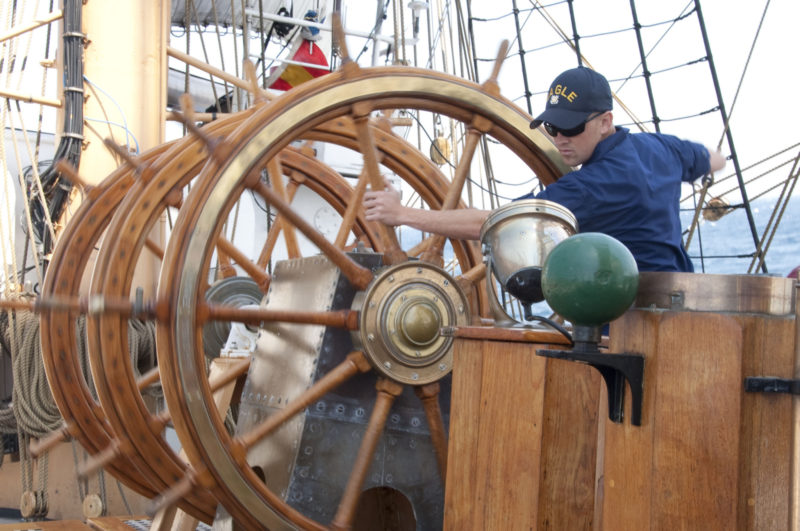In Christian belief, finding your true north is a spiritual metaphor for understanding purpose in life. In the physical world, that calculation is changing faster.
The National Oceanic and Atmospheric Administration issued an early update to the World Magnetic Model, its mapping of the Earth’s magnetic field used to calculate the difference between the geographic North Pole and the northern magnetic pole, which is where compasses point you to.

The magnetic north pole has shifted northward at an accelerating pace. Wikimedia image.
The magnetic pole moves around, because the planet’s magnetic field is always in a slow flux with currents of liquid iron and nickel moving in the Earth’s core. For as long as mariners have been using magnetic compasses, the pole has been moving around Canada’s Arctic islands.
But in the late 1990s, that movement accelerated north into the open Arctic sea, and now the magnetic pole is moving toward Siberia at about 30 miles per year, according to scientists.
The change in deviation between magnetic north and true north does not make much everyday difference for compass users in the middle latitudes. It gets more critical in the polar regions, where the deviation gets wider. The World Magnetic Model informs the Global Positioning System, the navigational systems used in commercial air travel – and the U.S. military, which needs the utmost in precision location to navigate submarines, airdrop supplies, and make things go boom.
The model normally gets updated every five years and the next round was scheduled for late in 2019 with a 2020 release. But after a Defense Department request, NOAA’s National Centers for Environmental Information issued its newest calculation Feb. 4.
Outside of the Arctic mariners will not see much difference; along the U.S. mid-Atlantic coast, the compass difference in magnetic north from the 2015 model is about 0.1 degree.
It’s one more reminder that we don’t live on a static planet. But for maritime interests the bigger deal might be sea level rise. It’s come up 1’ at New York City since 1900, and state environmental planners say it could be up another 18” by 2100.




